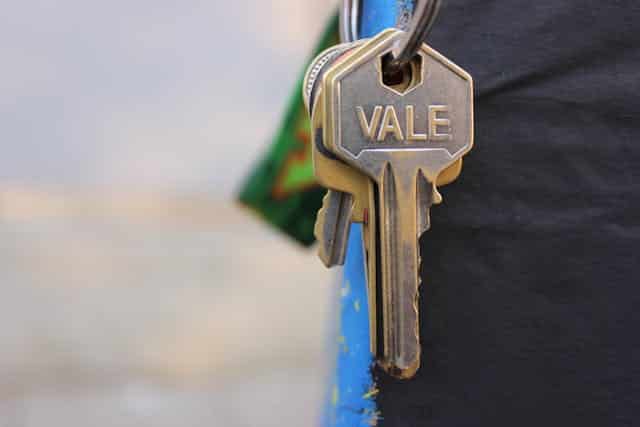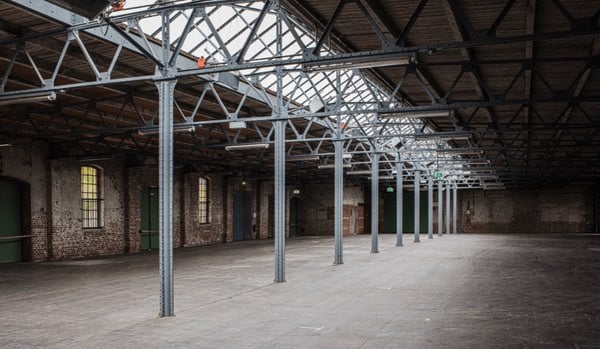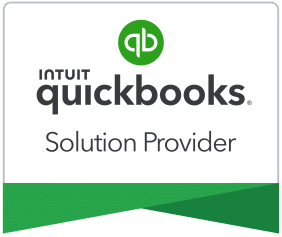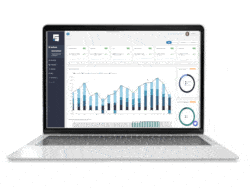The following blog post is shared by guest blogger Katrina Amurao of Katrina and The Team.
Thinking about going keyless? Keyless entry systems for commercial properties can provide a higher level of security and increase everyday convenience for tenants or employees. As a successful property manager, you know how important it is to keep up with the latest technology. The keyless entry systems outlined in this article use state-of-the-art development to make your building more secure than ever before.
What Are Keyless Entry Systems?
Keyless entry systems might seem self-explanatory. They are exactly what their name suggests: building security systems that don’t require keys. However, real estate technology is changing all the time, and the definition of commercial keyless entry systems has evolved.
Ultimately, the goal of every keyless lock is to increase the ease of access for approved guests and decrease the ease of access for unauthorized people. Experience the future of security with keyless entrances that not only gather data but also allow for remote monitoring, giving owners an unmatched degree of control. A wide range of innovative keyless entry system technologies is at your disposal. Choosing the best options for your business hinges on your operational requirements and security priorities.
Digital Keypads
One of the most common types of keyless entry systems is the digital keypad. A digital keypad is a device with a numeric keypad that requires a user to enter a code to gain entry. The code can be changed at any time, and some models allow users to program numerous codes.
Advantages of Digital Keypads
Digital keypads come with several advantages as a commercial security solution. For starters, they’re truly “keyless.” This means that authorized users don’t have to keep track of any physical items in order to safely come and go.
Keypads that offer multiple user codes allow building managers to log data and reference when codes were used. Tracking this information can be helpful in the event of a security breach or emergency. Additionally, when an employee is no longer with the company, their code can simply be deleted from the system- no physical key needs to be returned.
Digital keypads are also one of the most affordable types of keyless entry systems and are usually pretty easy to install. Sometimes, they require you to fully replace your door handle, but others will incorporate it with your existing hardware.
They also can be programmed to remain unlocked for a predetermined amount of time after being successfully unlocked. This can be a convenient perk if you operate a business that requires workers to enter and exit frequently. Additionally, the deadbolts can be programmed to automatically return to their locked position.
Disadvantages of Digital Keypads
While digital keypads are great for securing residential properties, they might not be robust enough for all types of commercial real estate.
One is that they can be vulnerable to “tailgating.” This is when an unauthorized person closely follows someone who has already accessed the building, essentially piggybacking on their entry. If you choose digital keypads, always be mindful of the “auto-lock” features described above.
Digital keypads are especially prone to human error. The convenience of digital keypads is completely lost if personnel forget their personalized codes. Building security will also be compromised if your employees or tenants share their code with anyone else.
Finally, passcodes can be compromised by the fingerprints left behind on glass-plated entry systems. Most digital keypads have additional protocols to account for this.
Key Fob Controls & Key Cards
Another popular type of keyless entry system is the key fob control. A key fob is a small, physical device that uses radio-frequency identification (RFID) to grant building access. They still require guests to keep track of a physical object, but they’re significantly faster and more secure than traditional keys.
Advantages of Key Fob Controls & Key Cards
Convenience is probably the biggest perk of RFID entry systems for commercial real estate. Your guests can enter the building by simply holding their device next to the reader. No fumbling for keys or remembering codes is necessary.
Key fobs and key cards can also be programmed to grant access to specific areas of a building. For example, you could give your staff access to all floors except the executive wing. You can also track when employees enter the building and what areas they visit while they’re in there.
Key fob entry systems are also one of the most secure types of keyless entry. They use complex, ever-changing algorithms that make them very difficult to hack. Additionally, if a key fob is lost or stolen, you can deactivate it and issue a new one.
Disadvantages of Key Fob Controls & Key Cards
It’s important to weigh the potential drawbacks of key fob entry systems before deciding.
To begin with, an initial investment is needed to acquire the devices and set up the essential infrastructure. Moreover, it’s essential to consider the expenses associated with upkeep and replacing any lost or damaged units as time goes on.
One notable drawback of key fobs is the simplicity with which duplicates can be created. FOB holders can transfer their code to another device, but building managers can readily identify this activity in the entry reports.
Bluetooth Access Control Systems
A newer type of keyless entry system is the Bluetooth access control system. This technology uses short-range wireless communication to grant building access. Essentially, it uses the same type of Bluetooth technology that you’d find in a wireless speaker or headphones.
Advantages of Bluetooth Access Control Systems
Who leaves home without their smartphone these days? Most people always carry their smartphone, so they won’t have to remember to bring a key fob or key card with them.
Like other types of keyless entry systems, Bluetooth access control can be programmed to grant access to specific areas of a building. You can also track when people enter and exit the building, as well as what areas they visit while they’re inside.
Bluetooth access credentials are especially secure since they’re stored behind the user’s smartphone privacy settings. They can’t be duplicated like a key fob code, and they’re much more difficult to hack than a traditional keypad passcode.
Disadvantages of Bluetooth Access Control Systems
The main disadvantage of Bluetooth access control systems is that they require a strong signal to work properly. If the Bluetooth signal is weak, then people might have trouble getting into the building.
Another potential downside is that Bluetooth access control systems are still relatively new, so they might be more expensive than other types of keyless entry systems. You’ll also need to factor in the costs of maintaining and replacing lost or damaged units over time.
Biometric Access Control Systems
A biometric access control system is a type of keyless entry system that uses physical characteristics to grant building access. The most common type of biometric access control is fingerprint recognition, but iris scanning and facial recognition are also becoming more popular.
Advantages of Biometric Access Control Systems
Biometric access control systems for commercial properties are among the most secure entry solutions available. They’re difficult to hack and almost impossible to duplicate.
Another advantage of biometric access control systems is that they’re very quick and easy to use. They can scan their fingerprint or iris and be on their way. These ultra-secure systems might be too intensive to use as the primary security system for the entire building. However, you can supplement your in-building security by placing them on access points for highly sensitive areas. For best results, these systems should be placed in areas with adequate security lighting.
Disadvantages of Biometric Access Control Systems
One potential disadvantage of biometric access control systems is that they can be expensive to install. Additionally, you’ll need to factor in the costs of maintaining and replacing lost or damaged units over time. They’re also pretty complicated to set up for each user.
Another downside is that some people might not be comfortable with the idea of using their biometrics to grant building access. If you’re considering using a biometric access control system, then make sure to let your employees know in advance. That way, they can decide whether or not they’re comfortable using the system.
Video & Intercom-Enabled Access Control Systems
A video and intercom-enabled access control system is a type of keyless entry system that uses video and audio verification to grant building access. This system includes an intercom that allows the person inside the building to communicate with the person trying to gain entrance.
Advantages of Video & Intercom-Enabled Access Control Systems
One perk of video and intercom systems is that they’re almost always monitored by a security professional. Having on-site personnel decide who can and cannot enter the building provides unique advantages.
The latest models can be monitored remotely, so you can have someone maintain security when you’re not in the office.
Another advantage of video and intercom systems is that they offer a high level of customization. You can program them to work with other types of security systems, like CCTV cameras or automatic locks.
Disadvantages of Video & Intercom-Enabled Access Control Systems
The main disadvantage of video and intercom systems is that they can be expensive to install and maintain. If you choose to have a paid staff member monitoring them, your ongoing costs will be higher than almost any other system.
Additionally, they’re often dependent on a strong Internet connection. If your building’s Wi-Fi is unreliable, then the system might not work as intended.
Lose The Keys & Make Your Building More Secure
Commercial buildings can now take advantage of keyless entry systems to make their businesses more secure. There are a variety of different types of keyless entry systems, but all provide an easier and more secure way for employees and customers to enter the building. If you’re looking for a new keyless entry system for your business or want to upgrade your current system, use the information above to make the best choice for your commercial property.
Lose The Keys & Make Your Building More Secure
Commercial buildings can now take advantage of keyless entry systems to make their businesses more secure. There are a variety of different types of keyless entry systems, but all provide an easier and more secure way for employees and customers to enter the building. If you’re looking for a new keyless entry system for your business or want to upgrade your current system, use the information above to make the best choice for your commercial property.
Author Bio

Reach Out To STRATAFOLIO
STRATAFOLIO is a commercial real estate software tailored for individuals who own or manage commercial real estate and utilize QuickBooks. Our platform is designed to streamline your operations, saving you time, boosting profits, and minimizing manual tasks. Ready to see how STRATAFOLIO can transform your property management experience? Schedule a demo today!








